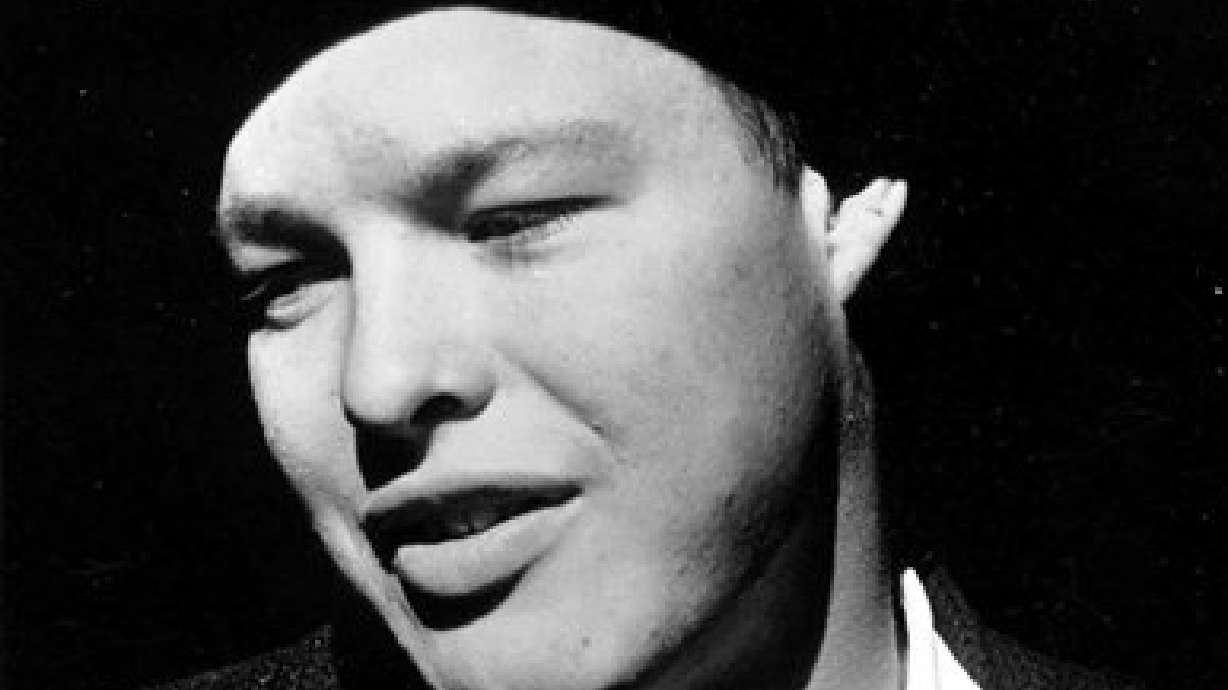Estimated read time: 5-6 minutes
This archived news story is available only for your personal, non-commercial use. Information in the story may be outdated or superseded by additional information. Reading or replaying the story in its archived form does not constitute a republication of the story.
SALT LAKE CITY (AP) -- A few months ago, the family of Everett Ruess, an idealistic young artist who vanished on a wilderness journey in 1934, was ready to accept his grim fate -- that he had been killed by Indians.
They prepared to cremate remains that were found in wild Utah redrock country, which would have forever sealed the legend of Ruess with ashes in the Pacific Ocean.
But nagging doubts led four nieces and nephews to another DNA lab, which reported the bones were from another, unknown person. It was a stunning reversal for a legend-busting story in National Geographic Adventure last spring.
For Ruess flame keepers, it was proof the man never wanted to be found. For the family, it was only more grief.
"It's very difficult for us," Brian Ruess, a 44-year-old software salesman in Portland, Ore., said Thursday. "Our interest was more for closure than romanticism. It's tough."
Ruess said the family was "very close" to cremating remains of somebody who wasn't their uncle. Now the family is shipping the bones and a few artifacts to the Navajo Nation reservation where they were discovered last year. Scientists say the remains are most likely those of a young Navajo Indian.
So how did the original DNA researchers get it so wrong, and where does family go from here?
Brian Ruess said the family doesn't know where to turn to solve the mystery of their uncle.
"The story is about Everett. We just found the wrong grave," said David Roberts, a contributing editor of the magazine, who weaved a Navajo legend describing Ruess' murder by other Indians to a site where an elder said he hastily buried the body.
"It's possible he's there, nearby," Roberts said Thursday. He plans no further search.
Others believe the rest of the story holds up. It relies largely on an account of a Navajo elder who waited decades to reveal that he had witnessed the murder of a white man resembling Everett Ruess.
The story was originally revealed to Daisy Johnson, who lived on the Navajo reservation, by a medicine man who blamed her grandfather's cancer on having handled Ruess' remains decades earlier. Johnson died of ovarian cancer Aug. 25. Her brother, Denny Bellson, followed the accounts to a burial site. He might have gotten the location wrong.
A measure of the power of the Everett Ruess myth was the backlash and threats that followed Robert's story. Brian Ruess said the family disavows zealots who didn't want to hear that he "lasted for a month and was killed by Indians" on his final wilderness journey.
"People want their heroes to succeed," Brian Ruess said. "Everybody likes a happy ending."
Before Everett Ruess vanished, setting off from Escalante, Utah, he wrote a final letter to his family in California that "as to when I revisit civilization, it will not be soon" and "it is enough that I am surrounded with beauty." He was 20, a gifted poet who had explored the Southwest over much of four years.
Initial DNA tests were termed "irrefutable" months ago by University of Colorado researchers. On Wednesday, they said they had been unable to duplicate the results on a second try, but don't know how they erred. Other experts suggest they mixed DNA from Ruess' survivors with that of the discovered bones, contaminating the results.
Scientists at the Armed Forces DNA Identification Laboratory in Rockville, Md. -- considered one of the world's pre-eminent authorities on DNA research -- say they have better technology for evaluating badly degraded DNA and made the right call.
"It was definitely not a match," said Mike Coble, research section chief for the Maryland lab. "Our results were very convincing."
Coble said his lab took on the Ruess mystery as a challenge, refusing the family's offer of payment for its services. They had one femur, a leg bone, to work with for DNA testing.
The structure of the bone suggested a man in his early 20s -- the right age for a Ruess match -- but military scientists say the DNA was distinctly Navajo, while anthropologists say other parts of the skeleton -- a jaw bone and a tooth -- suggested a Native American.
The DNA testing wasn't easy.
"The fact this bone was lying in desert soil so long, it was actually reddish-pink, the color of the soil. That can create problems when you do genetic testing," Coble said.
The Armed Forces lab is dedicated to identifying remains of U.S. soldiers and is working cases as old as from World War II.
Earlier this year, it disproved a legend of the Russian revolution, confirming that two missing children of Russian Czar Nicholas II and his wife, Alexandra, did not survive the slaughter that left the rest of the family in a mass grave in 1918. Remains of the czar's only son and a daughter were recovered from another location.
Coble said nothing about DNA science is easy or simple and that the technology was still evolving. The testing by a colleague of his, Dr. Odile Loreille, use techniques employed at only one other U.S. lab, in New York, for criminal cases.
University of Colorado biologist Kenneth Krauter, who handled the initial DNA tests of Ruess' supposed remains, used equipment considered reliable only for good DNA samples, Coble said. Krauter readily conceded his error and said he was using "inappropriate" technology.
(Copyright 2009 by The Associated Press. All Rights Reserved.)









